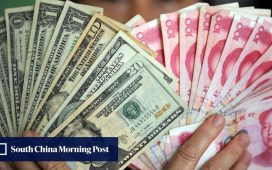China’s first-quarter gross domestic product (GDP) surpassed market expectations, indicating a promising start to the year for the world’s second-largest economy.
The National Bureau of Statistics said, “Generally speaking, the national economy got off to a good start in the first quarter . . . laying a good foundation for . . . the whole year.”
After jumping into the figures, I see three main takeaways from the announcement.
1.) Mixed signals persist
The 5.3% increase in GDP outperformed expectations, with analysts initially forecasting a growth rate of 4.6%.
This positive surprise suggests that China’s efforts to create a manufacturing-led economic revival are gaining traction.
However, amid the headline-grabbing growth figure, concerns linger over other economic sectors, particularly retail and property.
These sectors appear relatively weak, raising questions about the sustainability and inclusivity of China’s economic growth.
Notably, rating agency Fitch recently downgraded its outlook on China from neutral to negative, citing the economy’s reliance on the beleaguered property market as a source of heightened uncertainty.
This divergence between GDP growth and the underlying weakness in certain sectors underscores the need for a comprehensive assessment of China’s economic health beyond headline figures.
2.) Stimulus unlikely in short-term
The Q1 growth rate aligns with official targets set by Beijing, indicating, to my mind at least, that policymakers are likely to refrain from injecting additional stimulus into the economy.
Instead, authorities will probably adopt a more cautious approach, monitoring the evolving economic landscape and intervening only if perceived as necessary.
This measured response reflects policymakers’ desire to strike a balance between supporting growth and addressing long-term structural challenges such as debt sustainability and financial stability.
While some may advocate for more aggressive stimulus measures to propel growth further, policymakers are likely to continue prioritizing stability and sustainability in their policies and decisions.
3.) Still a post-Covid rebound?
It’s essential to contextualize China’s Q1 GDP growth within the broader narrative of its post-Covid recovery.
The country remained under lockdown until March-April 2023, meaning that the latest GDP figures still reflect the initial rebound from reopening rather than sustained economic expansion.
As such, while the first-quarter numbers are encouraging, they only offer a partial glimpse of China’s economic trajectory.
The true test of the economy’s resilience and momentum will come in the subsequent quarters, particularly Q2 and Q3, when the effects of the initial rebound are expected to plateau.
Analysts and investors will closely monitor these upcoming figures to gauge the strength and durability of China’s recovery, especially amid lingering uncertainties surrounding the global economic outlook and geopolitical tensions.
As China’s Q1 GDP growth outperforms expectations, it provides a glimmer of hope for the country’s economic revival. Beijing will be pleased. But beneath the surface of this headline figure lies a nuanced tapestry of complexities.






